
By Donald C. McIntyre
A Case Study in Matthew 2:1–12
There are forty-seven verbal forms in this pericope; all but 10 verbal forms are perfective aspect. Of those ten forms that are not perfective, one is stative, two are future, and the remaining six are imperfect or present tense. Porters method combines the aspect found in the tense of the verbs with associated elements that are attached to the mood. Applying his theory will begin with the most basic argument of his theory, that imperfective aspect is “defined foreground” information, and then proceed to his views on the perfect tense, where he finds the aspect to be stative, and “well defined foreground information” for discourse purposes. The analysis will end with a discussion of Porter on mood before explaining the future tense, since Porter does not give the future tense an aspect but leaves it as a mood of expectation. It should be noted that since the aorist is “main line” to the discourse, the aorist tense verbs should be seen as the basic plot structure, which is slowed down by the foregrounding devices.
Porter on Imperfective Aspect as Defined Foreground
As one views the verbal structure of Matthew 2:1-11, they can see the plot of the story unfold with Jesus being born, and then some maggi come to see him. Traveling from the far east, they go to the place that makes the most sense, to the palace. When they to the palace, they begin asking questions. This conversation is the first place that Matthew places in the foreground is the phrase with its introduction, “λέγοντες· Ποῦ ἐστιν ὁ τεχθεὶς,” translated, “saying, ‘Where is he who was born.” Matthew foregrounds the idea that these magi came, and they want to know where the baby is? It was safe for foreigners to assume that the one born to be king of the Jews would be in the palace, but there was no baby to be found. The story continues with more mainline aorist forms showing that this interaction terrified King Herod the Idumean king, who was not born king, but made king.1
Herod, always the paranoid, wanted to know about this new threat to his monarchy,2 so he called in the only people he thought would have the answer, the chief priests and the scribes. What Herod asked was the next place that Matthew brings to the foreground, and it is essentially the same question (though be it more informed,) than that which the maggai asked, “ἐπυνθάνετο παρʼ αὐτῶν˸ ποῦ ὁ Χριστὸς γεννᾶται,” “He asked them where the Christ was to be born?” In both questions, by magi and Herod, the phrase of asking, “they said/were saying” and “he asked” are imperfective aspects, defined foreground information. The other words highlighted in these questions are the “is” of the magi, which is refined by Herod’s Jewish understanding of the question posed to the priests of the key word “born?” They key idea in the foreground so far is that the King of the Jews has been born, and now people are trying to find him. The magi want to know where he is at the time of their arrival, and Herod wants to know where to start the hunt for his new-found competition. The story continues, but the last imperfect form does not occur until after the speech of the priests to Herod. The speech of the priests and scribes to Herod however offer an important part of the story, since the next foregrounded element in Matthew’s account is the term γέγραπται, which Porter notes as being stative in aspect and well-defined foreground.
Porter on Perfect-Stative as Well-Defined Foreground
In Porter’s SFL school of thought, the more marked terms are the terms which are used to express prominence in discourse. He states that, “The Perfect has the most morphological bulk of all the tenses, because of its unthematic root, endings and reduplication.”3 It is this “morphological bulk” that distinguishes the markedness, and therefore the prominence of the perfect in Porter’s view. The more traditional view of the perfect tense is reflected in Daniel Wallace, where he states that the perfect “describes an event that, completed in the past. . . has results in the present time.”4 Porter however cites Smyth and builds upon that formulation when he writes, “Smyth (434) attempts to circumvent this difficulty by noting that “The effects of a completed action are seen in the resulting present state. The state may be that of the subject or of the object.” But closer analysis of his examples supports the subjective interpretation.”5 A few pages later he states the proposition more emphatically and relates it to discourse:
The Perfect grammaticalizes the speaker’s conception of the verbal process as a state or condition. Louw, using formal data that he claims show that the Present and Aorist are similar but distinct from the Perfect, argues that this formal distancing (this evidence is not unambiguous) is related to a functional aspectual distancing (see also Collinge, “Reflexions,” 95-96). The formulation of the aspect Shows that the stative is distanced from the action itself in its conception of the event, unlike the perfective and imperfective. This distancing of action from the “sprecksituasie” (“conversation situation,” as he calls it) brings the verbal aspect into focus as the one concerned with an entire state. The result is that the Perfect gives “the appearance of something precisely more emphatic than the aorist. The perfect awakes therefore the impression as though it were more pertinent.6
With this understanding then, turning back to Matthew 2:1-11, when the scribes and chief priests reply to Herod, one can see that they were answering quite emphatically, “For so it is written according to the prophets.” The answer to the question which the magi and Herod were asking was going to be found not by a star but by the written scriptures. When one understands Matthew’s constant appeal to scriptures through introductory formulas, it seems fitting that he would draw such prominence to the scribes use of scripture in their reply. This story is being relayed through authorial omniscience, and Matthew’s understanding of this phrase is key to the prominence he espouses it. Where is the Christ to be born? He is to be born where the Prophets said he was to be born, and that has been written down. The author does not return back to the aorist mainline until after the chief priests are finished with their monologue, which will consist of two present tense, and two future tense forms quoting Micah 5:2 and Ezekiel 34:23. However, this quote necessitates a brief excursus of Porter on the influence of mood on verbal studies in the Greek New Testament (GNT).
Porter on Mood
Though Porter has clearly stated that the present tense is to be understood as having an imperfective aspect, it is now necessary to look at his assertions of how one should understand moods influence on verbal studies. He argues that these moods are also timeless and that they encapsulate the attitude of the speaker where the indicative has an assertive attitude7 the imperative having an attitude of direction,8 the subjunctive having a dual attitude of “Projection + contingency . . . with no expectation,”9 and then he curiously lists the future tense as a mood with an attitude of expectation.10 Porter goes on to say that “it is sufficient to state here that the Future is best seen as semantically designating the speaker’s expectation [+expectation] that an event is coming about. Since placement of the Future within the Greek verbal network has anomalies (i.e. presence of the Participle and Infinitive, which are difficult to explain in any system of analysis), its semantic character may be seen as reflecting qualities of both attitude and aspectuality.”11 It seems that Porter finds the “future tense” to be more of a mood than a grammatical tense, though having anomalies. Though this is not the place to ponder Porter’s reasons for this, with it being described one can now understand the rest of the speech of the scribes and chief priests within Porter’s views.
The Future and Other Foregrounding in Matthew 2:6
The chief priests and scribes quote a conflagration of Micah 5:2 and Ezekiel 34:23 to King Herod. “But you oh Bethlehem of the land of Judea are absolutely not the least among the rulers of Judah; for from you shall come forth a ruler, who will shepherd this people of mine, Israel.” The case of the nouns pertaining to Bethlehem are in the vocative case, and this adds prominence to the fact that it has been introduced with a perfect tense formula. Porter notes that the vocative can in fact be a deictic marker for a current time; perhaps this was intentional use of the vocative, seeing Bethlehems time of blessing conferred. Then there is the copulative in the present tense which is another aspectually imperfective verb that is foregrounding the information. It seems to be heightening the adverb of the negation, so that Bethlehem would no longer feel itself discounted as in the days of the divided monarchy and impending deportations, there would arise a king, which are the next verbs that are highlighted, along with the participle for shepherd. The foregrounded information in this verse are the copulative so that Judea would see that they emphatically “are not the least” but instead, they are among the first, because from them, will come the shepherd king.
The Rest of the Story
The final five verses of Matthew continue on the mainline with aorists with one exception, as the maggai leave Herod’s palace. Though Herod had given the maggai commands to report back to him concerning the child’s whereabouts; and he had misled them to assume that he desired to pay homage to the infant as well. It appears that the maggai would not be depended on Herod to find Bethlehem. Instead, the next aspect of the story that is foregrounded is the reappearance of the star by the term προῆγεν showing the star leading them to baby. The story continues that they find the baby because of the stars leading, they worship, they offer gifts, and then they are divinely warned not to return, and they go home a different way. The running use of the aorist would have given the same effect to the story as the summary in the sentence immediately preceding this one. Now that an analysis of the verbal aspect of the foregrounded verbs has been conducted, what can be made of the final assessment on Matthew 2:1-12 in Porter’s method?
Final Assessment of Matthew 2:1-12 via Porter’s Method
Epiphany is a favorite time for many Christians, as they sing We Three Kings, and hear a sermon about bringing gifts to Jesus. The discourse layout of this story following Porter’s method shows that this story is not actually about bringing your gifts to Jesus. The goal of this story revolves around a series of discussions asking, “Where is the king of the Jews?” and “Where is the Christ to be born?” And this passage is about the answer to those questions that comes from the scriptures. The Christ, who is to be born King of the Jews is to be born in Bethlehem. Those three brief monologues, the question of the magi, the question of Herod, and the answer by the scribes from scripture, account for nine of the ten foregrounded verbs. Matthew is seeking to establish that Jesus the Christ, was born King of the Jews, in Bethlehem as foretold by the prophets. The last term which is foregrounded is like a parting argument, showing that the magi, who can now serve as valid Jewish witnesses (being three adult men) to the event, attesting to Jesus’ birth and residence in Bethlehem, something that would be challenged in his later ministry.
So how do we preach that?
Now that we are convinced that we have the point of emphasis from the text, how do we craft a sermon outline? Thankfully for most of us who grew up on three point sermon outlines, we have identified three discourses that are prominent, and one narration. A workable sermon outline may look like this:
Where is the Christ, the King of the Jews?
Matthew 2:1-12
1. People are Searching for the one Born King of the Jews (Prominence in maggais’ question.)
2. The one Born King of the Jews was Christ (Prominence in Herod’s Question.)
3. The Christ was to be Born in Bethlehem according to the Scriptures (Prominence in priests’ and scribes’ response.)
Transition- People have witnessed that Jesus is the Christ as God led them to Bethlehem. (Prominence in Narration of Star leading the magi.)
Application: We must welcome Jesus in worship12 because He is the Christ, who was born King of Jews, in Bethlehem, as foretold by the prophets found in the scriptures.
Some Concluding Remarks on Sermon Prep Using Verbal Aspect
This article has sought to show that verbal aspect has the ability to show points of emphasis and de-emphasis through grounding (foregrounding and backgrounding). If the text can show us what is meant to be emphasized, due to its prominent foregrounding, or de-emphasized through backgrounding, then it has the ability to show us what should be emphasized or de-emphasized in our sermon.
To put it bluntly, if it is foreground in the text, it should be foreground in the sermon. Conversely, if it is background in the text, it should be background in the sermon.
It is my hope that this was an aid for those seeking how the biblical languages can assist them in sermon preparation beyond translation and word studies, as well as an encouragement to those who are practicing the hard work of exegesis and expository preaching.
Donald C. McIntyre is a Ph.D. Student in Old Testament at Baptist Bible Seminary, Clarks Summit, PA.
Resources pertinent to this article:
Lexham Research Commentary: Matthew
Grant R. Osborne, Matthew, Zondervan Exegetical Commentary on the New Testament
Stanley E. Porter Language and Interpretation Collection (24 vols.)
Daniel B. Wallace, The Basics of New Testament Syntax
Stanley E. Porter, Linguistic Analysis of the Greek New Testament
- Osborne, Grant R., Matthew (Zondervan Exegetical Commentary on The New Testament series Book 1) (pp. 119-120). Zondervan Academic. Kindle Edition. “King Herod was Herod the Great, born in 73 BC, the son of the Idumean Arab Antipater, head of the police force who kept order for Rome. He not only took over for his father but was named king of Judea by Rome in 37 BC. Known for his paranoia and jealousy, he killed his wife Mariamne and two of his sons.”
- Ibid.
- Porter, Verbal Aspect, 246.
- Daniel Wallace, The Basics of New Testament Syntax, (Grand Rapids, MI: Zondervan, 2000), 246.
- Porter, Verbal Aspect, 253.
- Porter, Verbal Aspect, 287-258.
- Porter, Verbal Aspect, 163.
- Ibid., 166.
- Ibid., 171.
- Ibid., 177.
- Ibid.
- This application point also encompasses the term that the Magi and Herod repeat as to their goal for finding the Messiah, which is frequently translated as “to worship.” However that term a derivative of προσκθνέω is described in BDAG as “to express in attitude or gesture one’s complete dependence on or submission to a high authority figure, (fall down and) worship, do obeisance to, prostrate oneself before, do reverence to, welcome respectfully . . . to human beings, but by this act they are to be recognized as belonging to a superhuman realm . . . [and of this passage in particular] Jesus, who is rendered homage as Messianic king and helper:” Therefore, the application of this is to recognize Jesus as fulfilling the scriptures as the Messiah-King of the Jews, as can be testified to by the magi, and to fall down, welcoming him in worship.

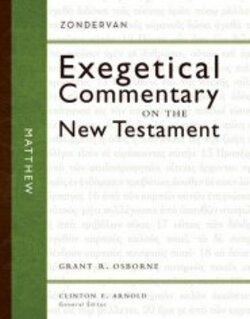

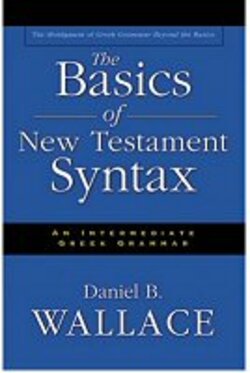
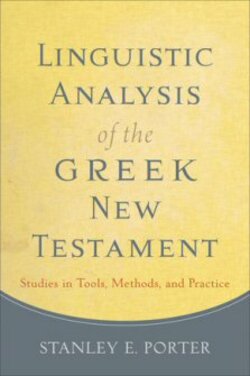

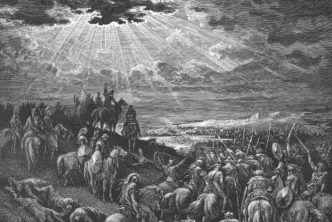
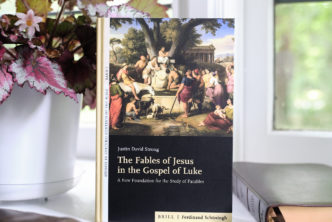

Great article. Definitely eye opening.
Hey brother thank you for taking the time to read this; it means the world to me!
How would you see preaching from a narrative different from preaching an epistle? Would you distinguish an message outline from an exegetical one? What role does the story play in communication?
Hey brother thanks for taking the time to interact. That is a great question, the verbal forms still assist in identifying prominence across genres; however I plan on writing a follow up article in the next 6-8 weeks showing how discourse analysis helps to create exegetical outlines which should influence our homiletical outlines. That is the goal of all of this to, to craft faithful exegetical outlines through identifying prominence markers from the Greek text. Feel free to look me up on Facebook as Chris McIntyre and I will let you know when those articles are set up!
Where did you guys get all these images? Were there photographers back then?
Tavis Bohlinger does great work finding photos, even taking some himself; look up his photography on Facebook! Also he’s the best editor I’ve ever had!